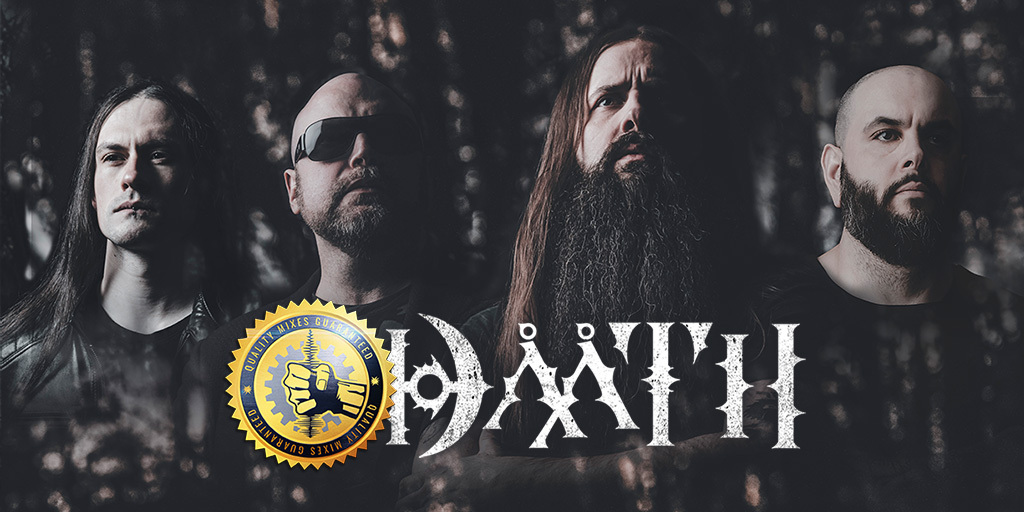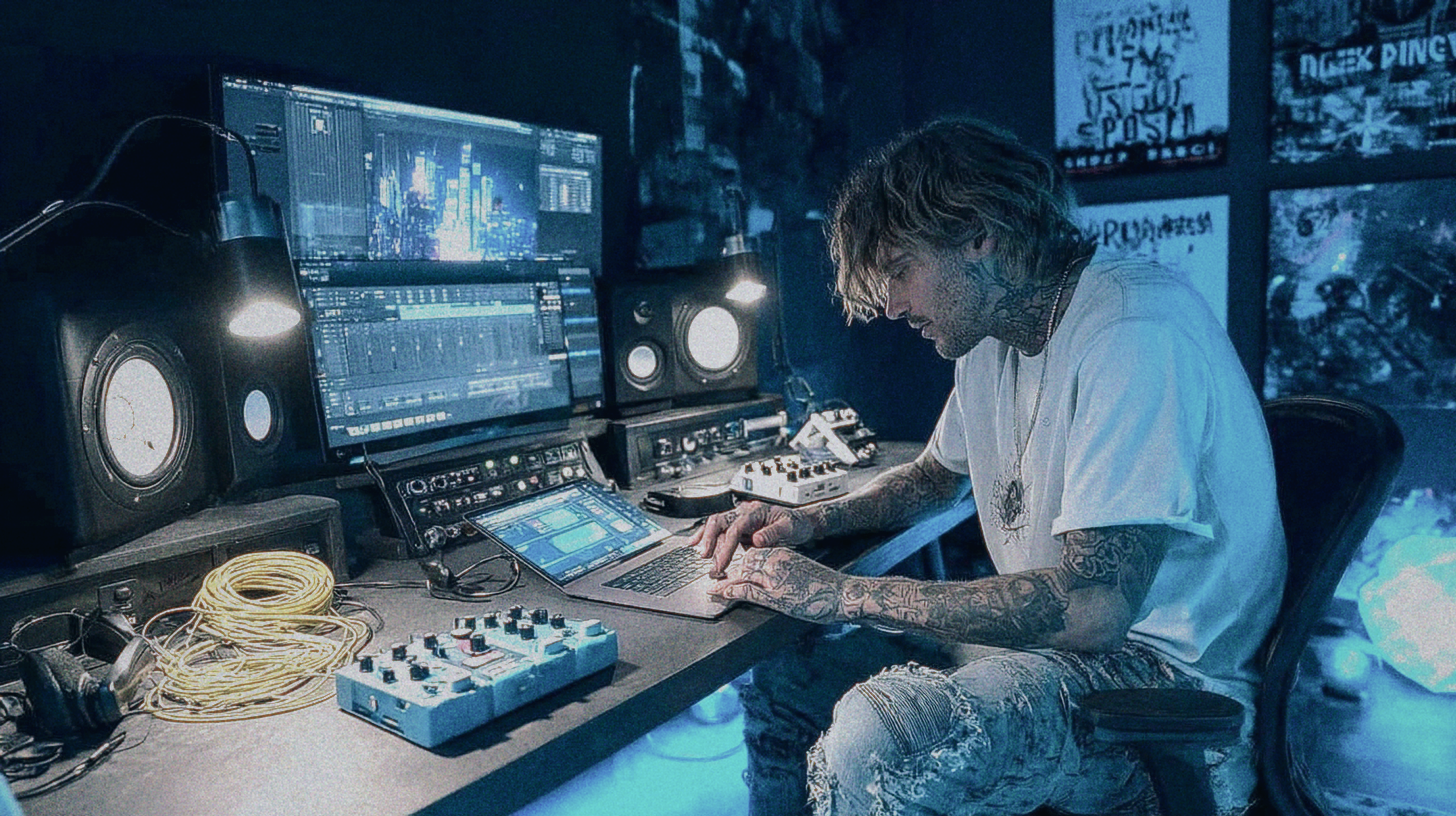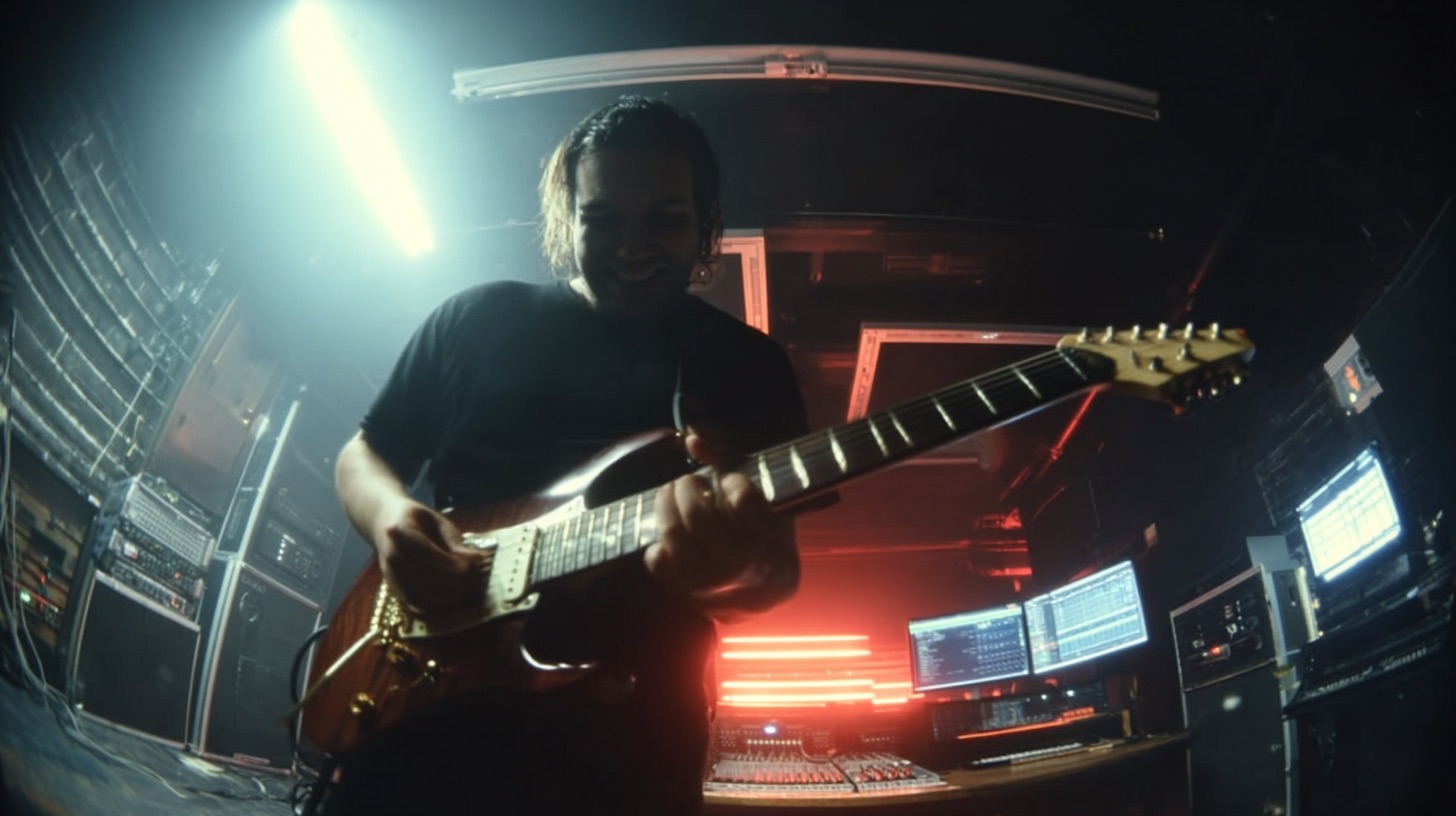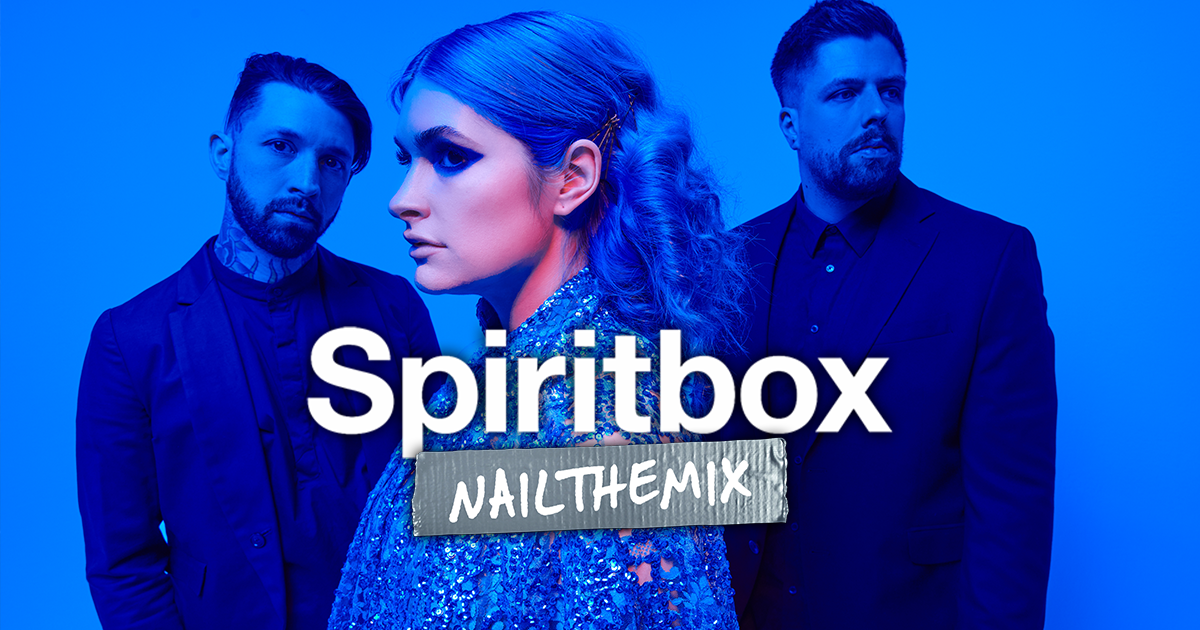
Mixing Crushing Daath Guitars with Christian Donaldson
Nail The Mix Staff
Let’s be honest, the guitar tone on a Daath record is a thing of beauty. It’s incredibly heavy and aggressive, but it also has a razor-sharp clarity that lets every intricate riff cut through a dense, technical mix. It’s a sound many producers chase. So, how does it come together?
We got a look inside the session for Daath’s track “The Philosopher” with legendary producer Christian Donaldson to see exactly how he crafts that crispy, crushing death metal guitar sound. Forget simple amp sims and basic EQ scoops; Christian employs a multi-layered chain of saturation, dynamic processing, and clever widening to build his tone. Let’s break down his iconic approach.
The Foundation: Processing a Solid Core Tone
While the raw tones provided for the session were great, Christian has a hard time mixing guitars he didn’t track himself. He almost always opts to re-amp because he knows his cabinets and signal chain inside and out. It gives him a familiar and reliable starting point for the heavy processing he likes to apply right from the get-go.
Taming the Fizz Without Losing the Bite
The first order of business on the individual guitar tracks is to tackle any problematic frequencies. Christian notes that even with a great tone, there can be an unpleasant “extra bite” that pokes out. Using an EQ like the FabFilter Pro-Q 3, he surgically notches out a narrow band of this harshness, often found somewhere around the 6-8kHz range. This isn’t a broad treble cut; it’s a precise move to clean up the tone while preserving all the necessary aggression. Smart EQ strategies like this are fundamental to a pro-sounding mix.
Creating Space with Snare and Bass Sidechaining
To ensure the guitars don’t clash with other key elements, Christian sets up two crucial sidechain triggers.
Ducking for the Bass
On the individual guitar tracks, he inserts Wavesfactory Trackspacer. But instead of keying it from the main bass track, he feeds it specifically from the sub-bass channel. This is a brilliant move. Every time a low-end bass note hits, the corresponding low-mid frequencies in the guitars are gently ducked, creating a pocket for the bass to live in without thinning out the guitars when the bass isn’t playing.
Making the Snare Punch
On the main guitar bus, where all the rhythm tracks are summed, he places another sidechain compressor. This one is keyed to the snare drum. Every time the snare hits, the guitars dip in volume for a split second, allowing the snare’s transient to cut through the wall of sound with maximum impact. This makes the snare sound incredibly punchy, even against heavily distorted guitars.
Shaping the Main Guitar Bus
This is where the majority of the sonic footprint is created. Christian uses a combination of saturation, dynamic EQ, and widening to make the guitars feel massive.
Saturation and Controlled Aggression
First, he drives the entire guitar bus into a saturation plugin, pushing it hard—almost to the point of clipping. This adds harmonics, brings the sound forward out of the speakers, and contributes a ton of aggressive character.
After saturation, he tackles overall harshness. While many producers reach for plugins like Soothe2, Christian avoids them, feeling they can rob a metal guitar of its essential bite. He believes harshness is a necessary part of the genre. Instead, he uses a multiband compressor or dynamic EQ like the Waves C6. This gives him complete manual control to dip specific, harsh frequencies only when they become excessive, rather than letting an algorithm make the decisions. He also cleverly uses it to add a controlled boost to the low-end “oomph,” giving the guitars weight without becoming muddy.
The “Big Picture” EQ
With dynamics under control, Christian uses a classic SSL-style channel strip EQ to make his main tonal moves. This is where he decides if the guitars need more overall treble, a push in the mids, or any broad adjustments. He also sets his final high-pass filter here, cleaning up any unneeded sub-bass that might conflict with the kick and bass guitar.
After the EQ, he might use a touch of light compression for leveling, like the Waves Renaissance Axx, but he finds it’s often not necessary after the previous stages.
Advanced Character and Widening
To add final polish and width, Christian turns to a few specific tools. First, a high-quality tape emulation plugin provides some warmth. He uses its powerful built-in filters to notch out one last specific, annoying midrange frequency, then compensates for any lost presence by boosting the treble knob on the same unit.
Then comes a two-part widening strategy:
- Widen the Mids: On the main bus, he uses the iZotope Ozone Imager to specifically widen the mid-range frequencies. Since the guitar is a mid-range-focused instrument, this makes the tone feel significantly bigger and more immersive.
- Widen the Attack: This happens on a separate, parallel channel, which we’ll break down next.
The Parallel Attack Bus: A Secret Weapon
For extra clarity and pick attack, Christian creates a parallel processing chain. He sends the main guitar bus to a separate aux track and processes it aggressively.
- Boost Transients: First, he uses a transient designer, like the SPL Transient Designer, to massively boost the initial pick attack of the guitars.
- Exaggerate with Compression: He then feeds that signal into a compressor and absolutely crushes it. This technique, a form of parallel compression, exaggerates the boosted pick attack and brings up all the aural details.
- Add Bite with EQ: He EQs this parallel signal to add any extra treble or aggressive mids he feels the main tone is missing.
- Widen the Treble: Here’s the magic. He uses another Ozone Imager on this parallel channel, but this time he sets it to only widen the high frequencies.
When blended back in with the main guitar bus, this parallel signal adds a cutting, high-frequency pick attack that sits on the extreme sides of the stereo field, giving the guitars an incredible 3D quality and clarity without cluttering the center of the mix. To prevent any clipping, he runs this channel through a limiter like the Waves L1 before blending.
The Power of Quad Tracking
Christian is a huge fan of quad-tracking guitars, but he approaches the second pair strategically. They aren’t just a carbon copy of the first. His second pair of rhythm guitars gets a similar processing chain, but with an EQ boost focused on a different area of the mid-range to add extra beefiness and fill in any sonic gaps.
He then tucks this second pair just behind the main guitars in the mix—slightly lower in volume and panned in a little less wide (e.g., 90% L/R instead of 100%). This second layer adds immense size and weight without fighting the primary guitars for space. It’s a technique that creates a truly massive wall of sound.
Building Tones Like a Pro
Christian Donaldson’s method is a masterclass in building a modern metal guitar tone from the ground up. By combining surgical EQ, dynamic control, creative sidechaining, and multi-stage widening, he achieves a sound that is both brutally heavy and surgically precise.
DAATH on Nail The Mix
Christian Donaldson mixes "The Philosopher"
Get the Session
These are techniques you can start applying to your own mixes today. But seeing a producer like Christian Donaldson make these decisions in real-time, in the context of a full mix, is a game-changer. With a Nail The Mix membership, you can do just that. You’ll get to watch Christian Donaldson mix the entire Daath track from scratch and even get the multi-tracks to practice on yourself. It’s the ultimate way to see how the pros craft release-ready tones and unlock your sound beyond presets.
Get a new set of multi-tracks every month from a world-class artist, a livestream with the producer who mixed it, 100+ tutorials, our exclusive plugins and more
Get Started for $1




